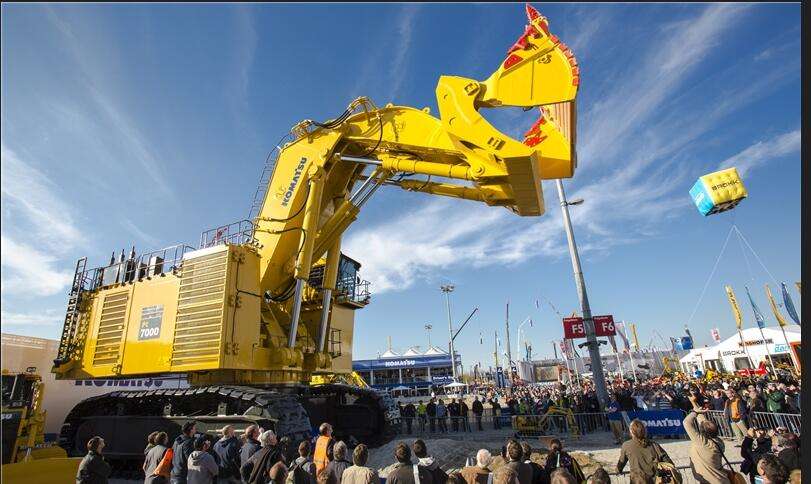Since independence in 1963, Kenya has gradually become one of Africa’s fastest growing economies. According to the Global Infrastructure Outlook Report released by the G20 in July 2017, in order to achieve the United Nations Sustainable Development Goals, Kenya will need US $206bn for infrastructure construction by 2040, 41% higher than the current investment level.
In the past five years, Kenya ’s average growth rate was 5.6%, exceeding the global average, and significant progress has been made in the fields of energy, infrastructure, information technology and education.
In 2018, the bilateral trade volume between China and Kenya reached US $5.37bn, an increase of 3.2% year-on-year. It is expected that Kenya’s economic growth will reach 6.9% in 2019.
The main growth factors include the improvement of the business environment, the government’s implementation of four major development plans to promote the development of manufacturing, food production and affordable housing, and the continued macroeconomic stability.
Kenya is located in eastern Africa, borders Somalia in the east, Tanzania in the south, Uganda in the west, borders with Ethiopia and South Sudan in the north, and borders the Indian Ocean in the southeast. The strategic location makes Kenya an important base for China ’s “Belt and Road” in Africa.
In the “2030 Vision” plan vigorously promoted by the Kenyan government, energy, infrastructure and construction, agriculture, manufacturing and other industries are listed as key development areas.
Cooperation between the two countries for mutual benefit For Kenya, the construction of the Mongolia-Inner Railway not only brought a lot of local employment opportunities, but also cultivated a large number of technical backbones and management talents for the local area.
The completion and operation of the Montenegro Railway makes Kenya the benchmark and leader in Africa’s infrastructure. It is also a good start for Chinese companies to enter the African market.
Kenya ’s Minister of Transport and Infrastructure Macaria said: “Kenya is actively promoting the docking of Kenya ’s Vision 2030 and the Belt and Road Initiative. Kenya needs investment from China.
Potential markets in Kenya include building materials, energy, electronics and more. Kenya is undergoing an urbanization process. The urbanization process in cities such as Nairobi has promoted the development of tourism, hotels and other industries, which in turn has driven the demand for the building materials industry.
Kenya’s construction industry is driven primarily by the two main infrastructure sectors, transportation and construction and housing. According to Kenya’s 2016 economic survey report, during the period of 2015-2025, the Kenyan construction industry is expected to grow at an average annual rate of 7.3%, which lays a positive tone for the prosperity of Kenya’s construction machinery and equipment market.
According to the Kenya Vision 2030 plan, Kenya will make major improvements to roads, railways, seaports and airport facilities in the next 20 years, and infrastructure development is also identified by the Vision 2030 plan as a key growth to attract investment and reduce business operating costs.
Factor
The opportunities for Chinese construction machinery exporters in the Kenyan market include new and used second-hand construction machinery and equipment (light and heavy bulldozers, loaders, crawler excavators, bulldozers, excavators, compactors, graders and mining equipment) supply of low-cost road maintenance programs and low-cost housing construction technologies.
It is worth noting that Kenya uses right-hand drive vehicles, so machinery with central control has a better market in Kenya. In addition, because most residential areas are built in areas where sewers and piped water are not yet available, there is a significant demand for wastewater treatment and management equipment in Kenya.
The Kenya Vision 2030 plan establishes the private sector as key to developing much-needed flagship infrastructure projects. However, GoK estimates that about US $2 to 3bn will be needed annually to meet Kenya’s infrastructure needs over the next decade.
In 2013 and 2014, China became Kenya’s second largest trading partner and source of imports for two consecutive years. Kenya is China’s entrance to East Africa, and both land and water transportation are very developed. Kenya is a potential market.
In its 2030 vision, the Kenyan government has listed infrastructure and construction, agriculture, manufacturing and other industries as key development areas. Outstanding representatives of Chinese companies, Aucma (Electronics) China Chinese companies such as Jiangxi International, Huawei (electronic communications), ZTE (building and construction materials), Jianchang Group (mining), Beiqi Foton (automobiles), Wuyi (building and construction materials), and China Free Trade Zone under construction have successfully settled in Kenya Increased investment and cooperation in Kenya.


